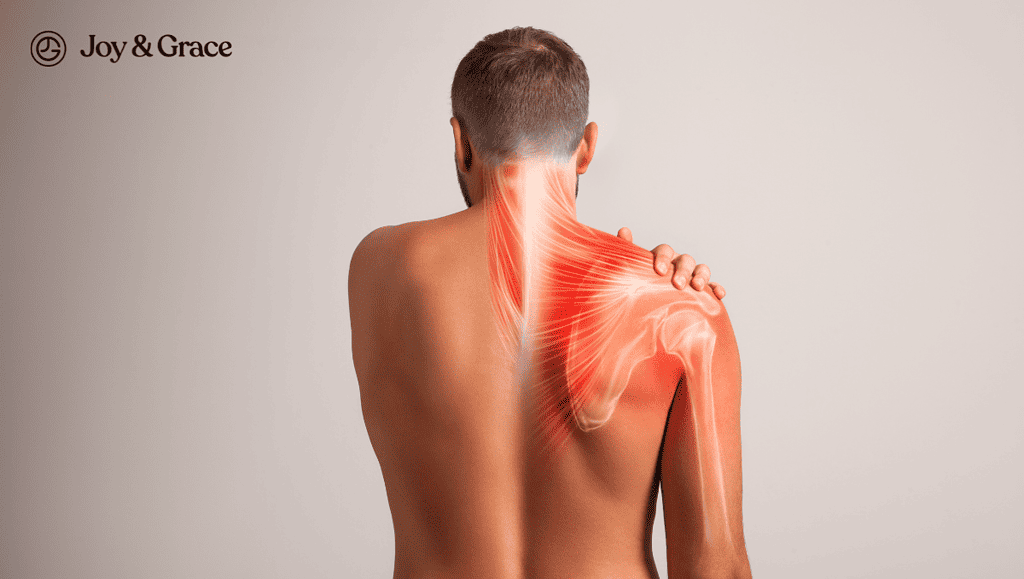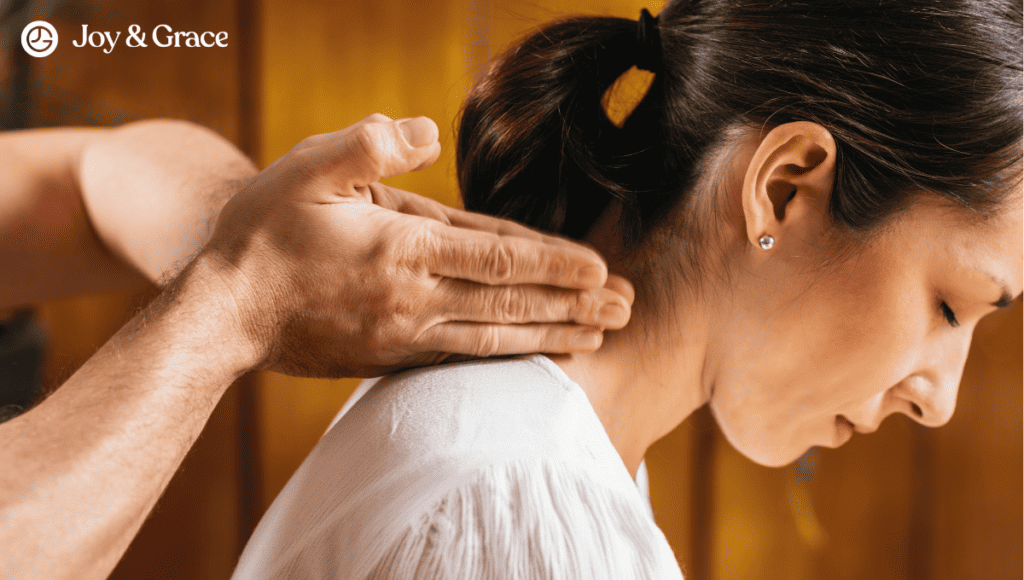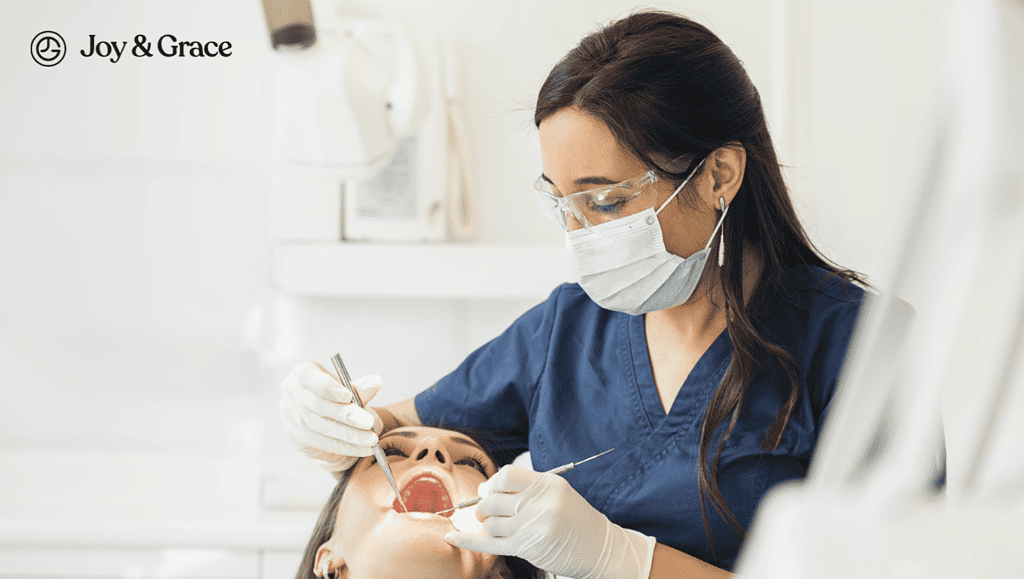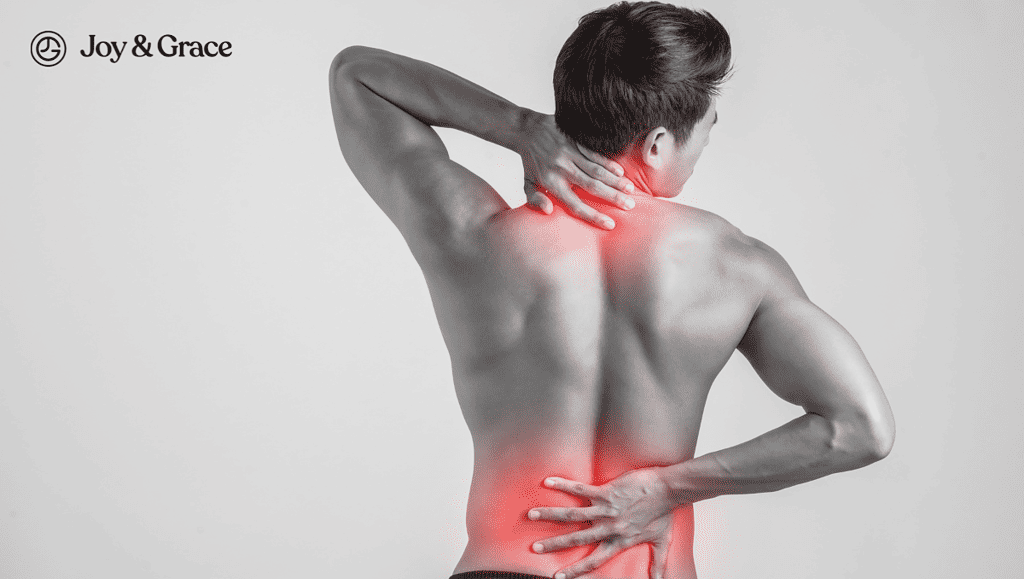Around 20 to 70% of adults will experience neck pain. Although it no longer comes as a surprise, it can dampen our lives and relationships.
As the medical world progresses, new neck pain treatments are bound to crop up. One of these new treatments includes cold laser therapy.
The word “laser” may stir up negative feelings. From their portrayal in sci-fi movies to real-life side effects such as peeling and redness, lasers may sometimes be seen in a bad light (get it?). This might leave you asking, “Is it safe?” or “Does it really work?” and that is perfectly understandable.
We’ve gathered articles and journals to help shed light on all of your concerns about the science of cold laser therapy, its efficacy in treating neck pain, and possible safety.
Can You Use Cold Laser On Your Neck?
Yes, cold laser therapy, or low-level laser therapy, can be used on your neck. Cold laser therapy is a non-invasive method of treating pain and can be used on any part of your body. According to a study, results are the same no matter what area the cold laser is used in.
Cold laser therapy, or low-level laser therapy (LLLT), is a new procedure that uses low light levels. These low levels of light may promote tissue healing and relieve inflammation.
It is called a “cold laser” because the light level is not enough to produce heat. Compared to other forms of laser therapy, cold laser therapy does not cause tissue destruction.
Cold laser therapy can be used for a variety of conditions. It is mainly used for tissue healing, pain relief, and to help treat inflammatory diseases.
Does Laser Therapy Work For Neck Pain?
Neck pain has many causes, such as inflammation caused by a disease like rheumatoid arthritis. It can also be from an injury or have no apparent cause at all, which is termed non-specific neck pain or mechanical neck pain.
Cold laser therapy may relieve neck pain by reducing inflammation. Studies show that cold laser therapy can work for both inflammatory and non-specific neck pain. However, non-specific neck pain is not inflammatory. Because of this, researchers believe cold lasers may have other effects unrelated to inflammation.
How To Treat Neck Pain With Low-Level Laser Therapy?
A doctor or trained specialist usually performs low-level laser therapy. In this procedure, the cold laser device is placed directly over the site of your neck pain. The device is held in place for some time, depending on the dose and size of the target area.

In cold laser therapy, there are four targets to treat body pain:
- The site of injury: to promote tissue healing and reduce inflammation
- Lymph nodes: to reduce edema and swelling
- Nerves: to provide pain relief
- Trigger points: to reduce muscle tension and tenderness
In neck pain, the operator may treat both the front and back of the neck, as the cervical vertebrae may cause the laser to scatter.
Is Cold Laser The Same As Red Light Therapy?
Red light therapy is an umbrella term for different treatments that make use of both LEDs and lasers, and this includes cold laser therapy. Without getting too technical (trust us, you don’t want to), red light therapy is an umbrella term for treatments that make use of light that falls in the red to infrared wavelengths.
How Does Cold Laser Therapy Work?
Cold laser therapy applies red and near-infrared light to a target area of the body. Researchers believe low-laser therapy may relieve neck pain by:
- Stimulating the release of natural pain relievers in our body. These include endorphins and serotonin.
- Elevating pain threshold. This means your nervous system will require a greater number of painful stimuli for you to feel pain. In even simpler terms, you won’t feel pain as much.
- Regulating the release of proteins and hormones that may cause pain.
- Slowing down pain signals
It can also stimulate cells in our body to promote tissue healing. Cold laser therapy can stimulate the following cells:
- Fibroblasts
These cells are responsible for producing collagen. Collagen is essential for many body tissues, including the bone, joints, muscles, and skin.
- Endothelial Cells
These are the cells that line our blood vessels. They help regulate blood flow and keep blood from leaking.
Stimulation of these cells can help in healing injured tissues and may help relieve neck pain.
How Does Cold Laser Reduce Inflammation?
Low-level laser therapy can also be used to reduce inflammation. It is believed that LLLT reduces inflammation by regulating the release of prostaglandins.
Prostaglandins are fats in our bodies that can act like hormones. But unlike regular hormones, they are not released from glands but from damaged tissues. Prostaglandins cause inflammation by causing our blood vessels to widen and directing your immune cells to the site of injury.
Prostaglandins are the reason why we have redness, swelling, and pain when we have an injury. Cold laser therapy can greatly decrease prostaglandin levels, which reduces inflammation and pain. It can also help reduce swelling and edema.
How Often Can You Use Cold Laser Therapy?
The frequency of treatment depends on the severity and cause of the pain. For neck pain, most studies suggest cold laser therapy treatments up to 5 times per week for 4 to 7 weeks.
How Long Does It Take For Cold Laser Therapy To Work?
Cold laser therapy can immediately give you a slight relief from pain after the procedure. You may find greater pain relief the more you get treatment and start seeing long-term benefits within two weeks.
How Long Does Cold Laser Therapy Last?
The effects of cold laser therapy can last for an extended period. Depending on the cause of the pain, it can last for months and even years.
Most studies agree that relief of neck pain after cold laser therapy can last up to 6 months.
What Are The Side Effects Of Cold Laser Treatment?
When we think of laser treatment, we imagine peeling raw skin and having to stay home for days. And that does happen in some forms of laser treatments, but not in cold laser therapy.
Unlike other forms of laser therapy, cold laser therapy has no serious adverse effects. Since it does not generate heat, it will not burn your skin or cause pain. Although it does not have any negative effects, there are still precautions we need to observe.
If you have the following, it is best to avoid cold laser therapy:
- Epilepsy
- Cancer
- Pregnancy
We must also follow eye precautions. Protective goggles are usually provided before you undergo the procedure.
Unlike other forms of laser therapy, cold laser therapy does not come with downtime. You won't have to look like a shedding lizard and lock yourself up in your house after the treatment, and you can return to daily living immediately.
Can Cold Laser Therapy Make Pain Worse?
Cold laser therapy does not usually worsen your pain. But some patients may experience a worsening of their pain. This is only temporary and disappears within days.
Takeaway
Neck pain is a common annoyance that can prevent us from doing what we love. It can be a result of an underlying disease or an injury. It can also have no identifiable cause at all. There are numerous ways to help relieve neck pain. One of them is cold laser therapy.
Cold laser therapy is a safe, non-invasive procedure that can provide immediate and long-term relief of neck pain. It can also address other conditions.
If you’ve tried cold laser therapy, share your experiences below. If you enjoyed this article, take a quick look at our other articles and sign up for our newsletter to receive updates!















